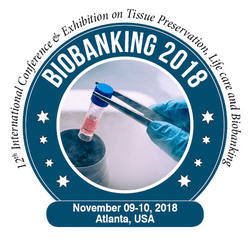Devyani Josh
Mercer University, USA
Title: Biofabrication and characterization of microcapsules encapsulating PC-12 cells for treatment of Parkinson’s disease
Biography
Biography: Devyani Josh
Abstract
Parkinson’s disease affects millions of people the world over and the incidence and severity of this disease continue to increase. This disease is characterized by decreased levels of catecholamines including dopamine in the brain. PC-12 cell, a pheochromocytoma cell line from Rattus norvegicus, is a cell line that is capable of producing catecholamines. These cells can synthesize, store and be stimulated to release dopamine. Additionally, a PC-12 cell has the capacity to undergo neuronal differentiation in response to a nerve growth factor and can be a useful and important feature of PC-12 cells for Parkinson’s Disease (PD) studies. The neuronally differentiated cells directly model sympathetic neurons which are one of the neuron types affected by Parkinson’s disease. PC-12 cells were cultured in Dulbecco’s Modified Eagle’s Medium (DMEM) supplemented with 10% Horse Serum, 5% Fetal Bovine Serum and 1% Penstrip at 37°Ð¡ and 5% CO2. For fabrication of the microcapsules, 1% w/v solution of sodium alginate was prepared, and PC-12 cells were added to it and allowed to stir for fifteen minutes. After stirring, the alginate–cells suspension was sprayed through a 1.40mm nozzle using a Buchi spray dryer B-190 into the calcium chloride solution (1.5% w/v). The microcapsules in calcium chloride solution were allowed to stir for fifteen minutes and washed with phosphate buffered saline (PBS) and centrifuged twice at ×285g (1200 RPM) to remove excess of calcium ions. The suspension of microcapsules was then transferred to the chitosan glutamate solution (0.5% w/v), stirred further for fifteen minutes and washed with PBS, centrifuged twice at ×285g (1200 RPM) to remove the excess chitosan glutamate. The suspension of the microcapsules was then transferred to the media and kept in the incubator at 37°Ð¡ and 5% CO2. The parameters affecting the size of the microcapsule were air flow rate, pump speed controlling the flow rate of the alginate cell suspension, the distance between the nozzle and calcium chloride solution, nozzle diameter, and spray rate. In this study, we emphasized the air flow rate through the nozzle to alter the size of the microcapsules and kept all the other parameters constant. We found that maintaining the higher flow rate leads to the reduction in the size of the microcapsules due to high shear at the tip of the nozzle. The size of the microcapsules was in the range of 250–350μm. The alginate microcapsules were spherical in shape and no deformities were observed. The short-term stability studies showed that the cells were viable in the capsule for up to 7 days. The microcapsules containing these cells can be delivered into the brain through the intra-cranial injection for the treatment of the Parkinson’s Disease (PD). These encouraging primary results will lead the way for further research in the area and testing in murine models of Parkinson’s disease.

